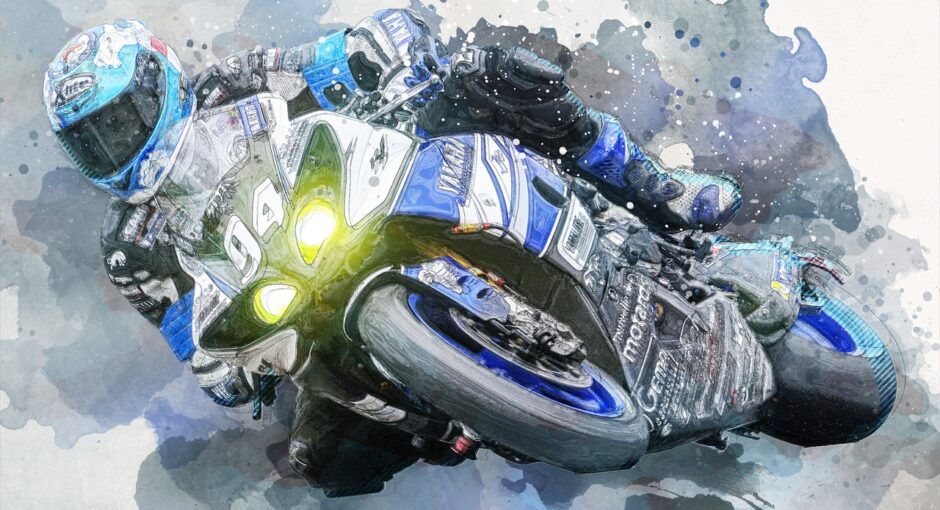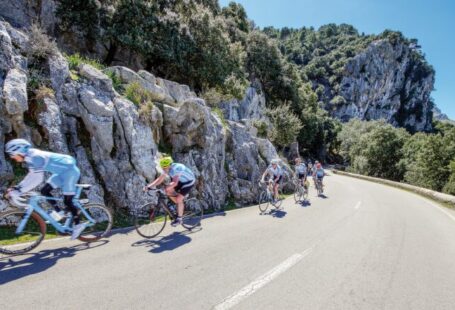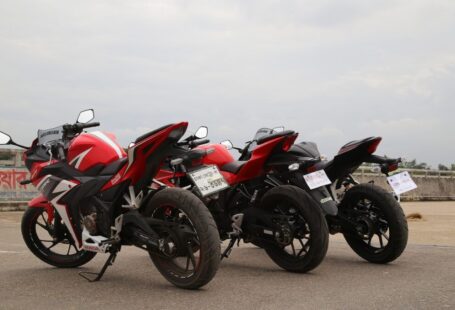So you want to ride a motorcycle, but have discovered you’re vertically challenged. Before telling yourself that either a) riding was a stupid idea in the first place, or b) the only thing you could ever throw a leg over is a Honda Rebel, know this: You’re not alone. I’m 5’3”, and I’ll ride anything I can. Don’t listen to anyone who says you can’t do it, because they’re wrong.
The Challenges You’ll Face
Here’s what matters: Seat height and reach to handlebars and foot controls. The bike’s seat shape and width affect both of those things. Also weight — the heavier the bike, the more difficult it is to handle.
Go to a bike show and sit on everything interesting. Pretend you’re dragging elbow around Assen like Marc Marquez, or roaring down the PCH. When you snap back to reality, check how everything feels. Take notes and/or photos.
So many ergonomic problems will become obvious. You might not be able to reach the shift lever (or in an extreme case, the side stand) on a cruiser, or find you can’t reach the ground without pulling a groin muscle on a sportbike. Better finding out now, right?
Bar reach, control span, and other small things can be adjusted within reason, just by loosening bolts, twisting stuff around and re-tightening bolts. You can affordably achieve much more in the aftermarket.
Does it matter if you can put your feet flat on the ground? As a total newbie, yes — you want as much control as possible. As you ride more, you’ll figure out if you like tiptoeing — or even one-footing, which some short-but-confident riders do with ease.
Keep in mind that you’ll occasionally need to paddle bikes backward. What’s merely difficult when tiptoeing can border on ridiculous if you’re hopping on one foot.
If you want to pregame before you sit on anything, check out Motorcycle Consumer News, which is the only resource that comprehensively measures the ergonomics of every bike it tests. Cycle Ergo is a helpful little tool, but works best if you start with a point of comparison; I’m comfortable on my Honda, how bad will this Ducati really be?
How A Bike Fits And How To Fix It
Seat height is just the start. Riding isn’t only about comfort; it’s also about control. If you can’t control your bike, you’re doomed before you begin.
Seats can be altered; they are, after all, just a piece of vinyl wrapped around foam and stapled to the plastic base. Consider both the shape and width of that seat on any bike. Some are much narrower at the front than they are at the rear, giving you the ability to scoot forward to reduce your reach to the ground. And sometimes shaving off an inch of foam is all the help you need.
The less seat width between your thighs, the easier touching the ground will be. For that reason, you shouldn’t let seat height numbers completely spook you. A really wide seat at 27 inches may be more awkward for you than a 31-inch super-narrow saddle.
Engines also matter. Transverse inline fours (which includes a lot of Japanese bikes) are wider, while V-Twins and singles are usually slimmer; four cylinders are wider than one. Perimeter frames add width because they wrap around an engine, while frames that wind over engines are slimmer. Squeeze your legs around that sucker as tight as you can while you’re trying different bikes to find the best fit.
Footpeg position is also massively important. Some people like riding crouched like racers, while others prefer being perfectly upright. Relaxed cruiser position puts your legs forward, but that also increases control difficulty. Additionally, road bumps go directly into your spine instead of being absorbed by your legs—your natural shock absorbers. If you’re absolutely convinced cruisers are how you want to roll, make sure you have the same amount of leg bend you have in your car for decent control.
Adjustable levers are useful. If the bike of your dreams doesn’t have them, aftermarket options (including shorty levers for the tiny-of-handspan) can be fairly inexpensive upgrades. You should be able to comfortably pull in the clutch and front brake with your index and pointer fingers, without crushing the rest.
It’s generally a bad idea to “lower” your suspension. Doing so doesn’t really do much to help you reach the ground, while at the same time costing both a bucket of money and ruining your motorcycle’s handling. Friends don’t let friends lower unless they’re damn sure everyone knows what they’re doing.
How To Still Ride Anyway
Bikes rely a lot more on your skills than cars do. Practicing with a bike you don’t care about in a relatively safe environment (such as a dirt bike on a grassy, gently-hilled area) will teach you a lot.
Some basics:
Sliding your butt around on the saddle. Simply slide your butt over to the side where you want to put your foot down. You’ll add several inches to your leg, and flat-foot on that side with ease.
Know where your footpegs are. This is important, because sometimes, the footpegs are right where you want to put your legs. What’s merely painful when tall can be disastrous if you’re short—because you can dump the bike. If you find that’s the case, just get yourself used to putting your legs down either behind or in front of the footpegs at a stop.
Become a master of slow-speed maneuvers. MSF and similar courses teach this, but it’s up to you to practice it until you can do it in your sleep. Parking lot maneuvers are what will save you 99 percent of the time, because the less you have to put your feet on the ground, the better.
Learn how to properly pick up a dropped bike. Leverage is key.



